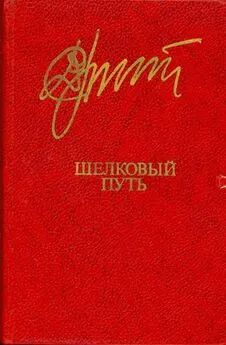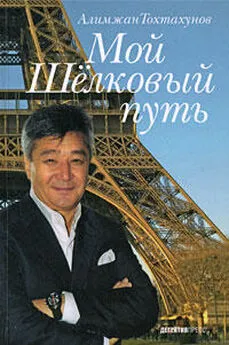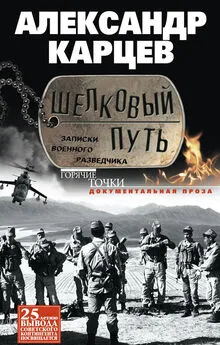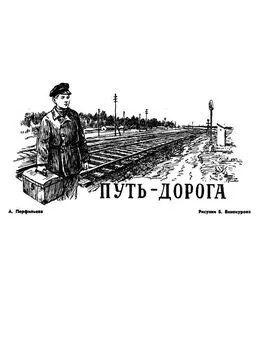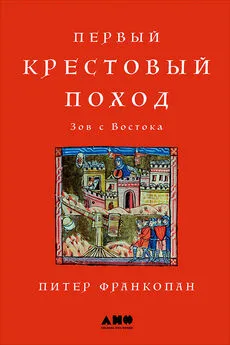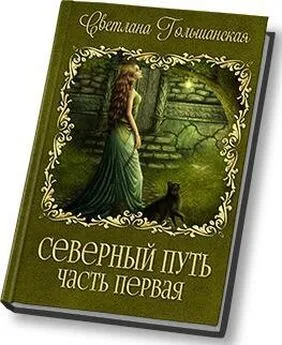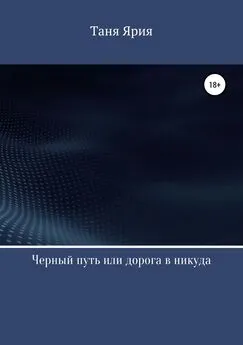Питер Франкопан - Шелковый путь. Дорога тканей, рабов, идей и религий
- Название:Шелковый путь. Дорога тканей, рабов, идей и религий
- Автор:
- Жанр:
- Издательство:Литагент 5 редакция
- Год:2017
- Город:Москва
- ISBN:978-5-699-95706-4
- Рейтинг:
- Избранное:Добавить в избранное
-
Отзывы:
-
Ваша оценка:
Питер Франкопан - Шелковый путь. Дорога тканей, рабов, идей и религий краткое содержание
Вы увидите, что история развивалась совсем не так, как мы привыкли изучать в школе. Так, столетия назад интеллектуальные центры мира, «Оксфорды» и «Кембриджи», «Гарварды» и «Йели», находились не в Европе, а в городах Средней Азии, куда и съезжалась вся просвещенная молодежь в поисках успеха.
Шелковый путь. Дорога тканей, рабов, идей и религий - читать онлайн бесплатно ознакомительный отрывок
Интервал:
Закладка:
828
Pamuk, ‘Urban Real Wages’, рр. 310–311.
829
Anna Bijns, ‘Unyoked is Best! Happy the Woman without a Man’, in K. Wilson, Women Writers of the Renaissance and Reformation (Athens, 1987), р. 382. См. здесь T. de Moor and J. Luiten van Zanden, ‘Girl Power: The European Marriage Pattern and Labour Markets in the North Sea Region in the Late Medieval and Early Modern Period’, Economic History Review (2009), рр. 1–33.
830
J. de Vries, ‘The Industrial Revolution and the Industrious Revolution’, Journal of Economic History 54.2 (1994), рр. 249–270; J. Luiten van Zanden, ‘The “Revolt of the Early Modernists” and the “First Modern Economy”: An Assessment’, Economic History Review 55 (2002), рр. 619–641.
831
E. Ashtor, ‘The Volume of Mediaeval Spice Trade’, Journal of European Economic History 9 (1980), рр. 753–757; E. Ashtor, ‘Profits from Trade with the Levant in the Fifteenth Century’, Bulletin of the School of Oriental and African Studies 38 (1975), рр. 256–287; Freedman, ‘Spices and Late Medieval European Ideas’, рр. 1212–1215.
832
О венецинском импорте пигментов см. L. Matthew, ‘“Vendecolori a Venezia”: The Reconstruction of a Profession’, Burlington Magazine 114.1196 (2002), рр. 680–686.
833
Marin Sanudo, ‘Laus Urbis Venetae’, in A. Aricò (ed.), La città di Venetia (De origine, situ et magistratibus Urbis Venetae) 1493–1530 (Milan, 1980), рр. 21–23; об изменении внутреннего пространства в этот период см. R. Good, ‘Double Staircases and the Vertical Distribution of Housing in Venice 1450–1600’, Architectural Research Quarterly 39.1 (2009), рр. 73–86.
834
B. Krekic, ‘L’Abolition de l’esclavage à Dubrovnik (Raguse) au XVe siècle: mythe ou réalité?’, Byzantinische Forschungen 12 (1987), рр. 309–317.
835
S. Mosher Stuard, ‘Dowry Increase and Increment in Wealth in Medieval Ragusa (Dubrovnik)’, Journal of Economic History 41.4 (1981), рр. 795–811.
836
M. Abraham, Two Medieval Merchant Guilds of South India (New Delhi, 1988).
837
Ma Huan, Ying-yai sheng-lan , tr. J. Mills, The Overall Survey of the Ocean’s Shores (Cambridge, 1970), р. 140.
838
T. Sen, ‘The Formation of Chinese Maritime Networks to Southern Asia, 1200–1450’, Journal of the Economic and Social History of the Orient , 49.4 (2006), рр. 427, 439–440; H. Ray, Trade and Trade Routes between India and China, c. 140 BC – AD 1500 (Kolkata, 2003), рр. 177–205.
839
H. Tsai, The Eunuchs in the Ming Dynasty (New York, 1996), р. 148; T. Ju-kang, ‘Cheng Ho’s Voyages and the Distribution of Pepper in China’, Journal of the Royal Asiatic Society 2 (1981), рр. 186–197.
840
W. Atwell, ‘Time, Money and the Weather: Ming China and the “Great Depression” of the Mid-Fifteenth Century’, Journal of Asia Studies 61.1 (2002), р. 86.
841
T. Brook, The Troubled Empire: China in the Yuan and Ming Dynasties (Cambridge, MA, 2010), рр. 107–109.
842
Ruy González de Clavijo, Embajada a Tamorlán , tr. G. Le Strange, Embassy to Tamerlane 1403–1406 (London, 1928), 11, рр. 208–209.
843
Там же, 14, р. 270.
844
Там же, рр. 291–292. О распространении видения Тимуридов в искусстве и архитектуре см. T. Lentz and G. Lowry, Timur and the Princely Vision: Persian Art and Culture in the Fifteenth Century (Los Angeles, 1989), рр. 159–232.
845
Khvānd Mīr, Habibu’s-siyar , Tome Three, ed. and tr. W. Thackston, The Reign of the Mongol and the Turk , 2 vols (Cambridge, MA, 1994), 1, р. 294; D. Roxburgh, ‘The “Journal” of Ghiyath al-Din Naqqash, Timurid Envoy to Khan Balïgh, and Chinese Art and Architecture’, in L. Saurma-Jeltsch and A. Eisenbeiss (eds), The Power of Things and the Flow of Cultural Transformations: Art and Culture between Europe and Asia (Berlin, 2010), р. 90.
846
R. Lopez, H. Miskimin and A. Udovitch, ‘England to Egypt, 1350–1500: Long-Term Trends and Long-Distance Trade’, in M. Cook (ed.), Studies in the Economic History of the Middle East from the Rise of Islam to the Present Day (London, 1970), рр. 93–128. J. Day, ‘The Great Bullion Famine’, Past & Present 79 (1978), рр. 3–54, J. Munro, ‘Bullion Flows and Monetary Contraction in Late-Medieval England and the Low Countries’, in J. Richards (ed.), Precious Metals in the Later Medieval and Early Modern Worlds (Durham, NC, 1983), рр. 97–158.
847
R. Huang, Taxation and Governmental Finance in Sixteenth-Century Ming China (Cambridge, 1974), рр. 48–51.
848
T. Brook, The Confusions of Pleasure: Commerce and Culture in Ming China (Berkeley, 1998).
849
N. Sussman, ‘Debasements, Royal Revenues and Inflation in France during the Hundred Years War, 1415–1422’, Journal of Economic History 53.1 (1993), рр. 44–70; N. Sussman, ‘The Late Medieval Bullion Famine Reconsidered’, Journal of Economic History 58.1 (1998), рр. 126–154.
850
R. Wicks, ‘Monetary Developments in Java between the Ninth and Sixteenth Centuries: A Numismatic Perspective’, Indonesia 42 (1986), рр. 59–65; J. Whitmore, ‘Vietnam and the Monetary Flow of Eastern Asia, Thirteenth to Eighteenth Centuries’, in Richards, Precious Metal , рр. 363–393; J. Deyell, ‘The China Connection: Problems of Silver Supply in Medieval Bengal’, in Richards, Precious Metal , рр. 207–227.
851
Atwell, ‘Time, Money and the Weather’, рр. 92–96.
852
A. Vasil’ev, ‘Medieval Ideas of the End of the World: West and East’, Byzantion 16 (1942–1943), рр. 497–499; D. Strémooukhoff, ‘Moscow the Third Rome: Sources of the Doctrine’, Speculum (1953), р. 89; ‘Drevnie russkie paskhalii na os’muiu tysiachu let ot sotvereniia mira’, Pravoslavnyi Sobesednik 3 (1860), рр. 333–334.
853
A. Bernáldez, Memorías de los reyes católicos , ed. M. Gómez-Moreno and Carriazo (Madrid, 1962), р. 254.
854
I. Aboab, Nomologia, o Discursos legales compuestos (Amsterdam, 1629), р. 195; Altabé, Spanish and Portuguese Jewry before and after 1492 (Brooklyn, 1983), р. 45.
855
Freedman, ‘Spices and Late Medieval European Ideas’, рр. 1220–1227.
856
V. Flint, The Imaginative Landscape of Christopher Columbus (Princeton, 1992), рр. 47–64.
857
C. Delaney, ‘Columbus’s Ultimate Goal: Jerusalem’, Comparative Studies in Society and History 48 (2006), рр. 260–262.
858
Там же, рр. 264–265; M. Menocal, The Arabic Role in Medieval Literary History: A Forgotten Heritage (Philadelphia, 1987), р. 12. Тексты писем-заявлений – S. Morison, Journals and Other Documents on the Life and Voyages of Christopher Columbus (New York, 1963), р. 30.
859
O. Dunn and J. Kelley (ed. and tr.), The Diario of Christopher Columbus’ First Voyage to America, 1492–1493 (Norman, OK, 1989), р. 19.
860
Ibn al-Faqīh, in N. Levtzion and J. Hopkins (eds), Corpus of Early Arabic Sources for West African History (Cambridge, 1981), р. 28.
861
R. Messier, The Almoravids and the Meanings of Jihad (Santa Barbara, 2010), рр. 21–34. Также см. R. Messier, ‘The Almoravids: West African Gold and the Gold Currency of the Mediterranean Basin’, Journal of the Economic and Social History of the Orient 17 (1974), рр. 31–47.
862
V. Monteil, ‘Routier de l’Afrique blanche et noire du Nord-Ouest: al-Bakri (cordue 1068)’, Bulletin de l’Institut Fondamental d’Afrique Noire 30.1 (1968), р. 74; I. Wilks, ‘Wangara, Akan and Portuguese in the Fifteenth and Sixteenth Centuries. 1. The Matter of Bitu’, Journal of African History 23.3 (1982), рр. 333–334.
863
N. Levtzion, ‘Islam in West Africa’, in W. Kasinec and M. Polushin (eds), Expanding Empires: Cultural Interaction and Exchange in World Societies from Ancient to Early Modern Times (Wilmington, 2002), рр. 103–114; T. Lewicki, ‘The Role of the Sahara and Saharians in the Relationship between North and South’, in M. El Fasi (ed.), Africa from the Seventh to Eleventh Centuries (London, 1988), рр. 276–313.
864
S. Mody Cissoko, ‘L’Intelligentsia de Tombouctou aux 15e et 16e siècles’, Présence Africaine 72 (1969), рр. 48–72. Эти рукописи были каталогизированы в шестнадцатом веке Мухаммедом аль-Уонгэри и стали частью великолепной коллекции, которая принадлежит его потомкам и сейчас. Первоначальное сообщение о том, что документы были уничтожены туарегами в 2012 году, оказалось ошибочным.
865
Ibn Faḍl Allāh al-ʿUmarī, Masālik al-abṣār fī mamālik al-amṣār , tr. Levtzion and Hopkins, Corpus of Early Arabic Sources , рр. 270–271. Снижение ценности золота широко отмечают современные комментаторы; более скептический взгляд см. W. Schultz, ‘Mansa Musa’s Gold in Mamluk Cairo: A Reappraisal of a World Civilizations Anecdote’, in J. Pfeiffer and S. Quinn (eds), History and Historiography of Post-Mongol Central Asia and the Middle East: Studies in Honor of John E. Woods (Wiesbaden, 2006), рр. 451–457.
866
Ibn Baṭṭūṭa, Travels , 25, 4, р. 957.
867
B. Kreutz, ‘Ghost Ships and Phantom Cargoes: Reconstructing Early Amalfitan Trade’, Journal of Medieval History 20 (1994), рр. 347–357; A. Fromherz, ‘North Africa and the Twelfth-Century Renaissance: Christian Europe and the Almohad Islamic Empire’, Islam and Christian Muslim Relations 20.1 (2009), рр. 43–59; D. Abulafia, ‘The Role of Trade in Muslim-Christian Contact during the Middle Ages’, in D. Agius and R. Hitchcock (eds), The Arab Influence in Medieval Europe (Reading, 1994), рр. 1–24.
Читать дальшеИнтервал:
Закладка:


